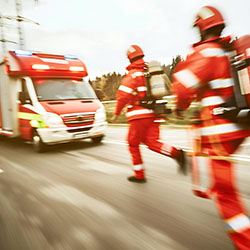Can speed bumps and speed humps slow down more than just regular traffic? While these devices are crucial for ensuring road safety, there’s an ongoing debate about their potential impact on emergency response times. Emergency vehicles, such as fire trucks, ambulances, and police cars, rely on rapid response times to save lives and protect property. This article delves into the complexities of how speed bumps and humps can affect emergency services and explores strategies to balance road safety with efficient emergency responses.
The Impact of Speed Bumps and Speed Humps on Emergency Response Times
Understanding the Concern
Emergency vehicles are designed and equipped to reach their destinations as quickly as possible. Whether responding to a fire, a medical emergency, or a criminal incident, these vehicles must navigate traffic swiftly to ensure timely assistance. Speed bumps and humps, while effective at slowing down regular traffic, can pose challenges for emergency responders. The primary concern is that these traffic calming devices might delay emergency vehicles, potentially leading to increased response times and, consequently, adverse outcomes for those in need of urgent help.- Emergency Vehicles and Speed Control
- Nature of Emergency Vehicles: Emergency vehicles are often larger and heavier than standard cars. Fire trucks, ambulances, and police cars are designed to carry specialized equipment and personnel. They must maintain a high speed to ensure rapid response to emergencies.
- Critical Situations: In emergency situations, every second counts. Delays in response times can mean the difference between life and death, especially in medical emergencies where prompt treatment is crucial. Similarly, in fire incidents, a few minutes’ delay can result in significant property damage or loss of life.
- Potential Delays
- Effect of Speed Bumps and Humps: Speed bumps and humps are designed to slow down vehicles, which can be problematic for emergency responders. These devices can force emergency vehicles to decelerate, carefully navigate over them, and then accelerate again, causing delays.
- Urban Areas and Traffic Congestion: The impact of speed bumps and humps is particularly pronounced in densely populated urban areas where traffic congestion is already a concern. In such areas, emergency vehicles might face additional obstacles, such as parked cars and narrow streets, which can compound the delays caused by traffic calming measures.
Mitigating the Impact
While speed bumps and humps are essential for road safety, particularly in residential areas and near schools, there are strategies to mitigate their impact on emergency response times. Careful planning and innovative solutions can help balance the need for traffic calming with the necessity of quick emergency responses.- Strategic Placement
- Planning and Coordination: Proper planning and coordination with local emergency services can help in the strategic placement of speed bumps and humps. For instance, these devices can be installed in less critical areas or placed in a way that allows emergency vehicles to bypass them using alternate routes.
- Design Considerations: The design of speed bumps and humps can also be tailored to minimize their impact on emergency vehicles. For example, speed humps with a gentler slope can be used to allow emergency vehicles to pass over them more quickly without significantly slowing down.
- Alternative Solutions
- Speed Cushions: An innovative solution to this challenge is the use of speed cushions. Unlike traditional speed bumps, speed cushions are divided into sections, allowing wider vehicles, such as fire trucks and ambulances, to straddle the cushion without reducing speed. This design ensures that regular vehicles slow down, while emergency vehicles can maintain their speed.
- Raised Crosswalks and Rumble Strips: Other alternatives include raised crosswalks and rumble strips, which can slow down regular traffic without significantly hindering emergency vehicles. These measures are particularly useful in areas where pedestrian safety is a priority.
Case Studies and Research
Real-world examples and research data provide valuable insights into how communities can effectively balance traffic calming with emergency response needs. Several municipalities have implemented innovative solutions to address this challenge, ensuring that their traffic calming measures do not compromise emergency response times.- Real-World Examples
- Community Success Stories: Highlight cases where communities have successfully integrated speed bumps and humps with emergency response needs. For example, some cities have worked closely with emergency services to map out response routes that avoid traffic calming devices, or they have implemented speed cushions as an alternative.
- Collaborative Efforts: Discuss how collaborative efforts between traffic engineers, city planners, and emergency services have led to the successful implementation of traffic calming measures that do not impede emergency responses.
- Data on Response Times
- Research Findings: Present available data and research findings on the impact of speed bumps and humps on emergency response times. Studies have shown varying impacts, with some indicating minimal delays when proper planning and alternative routes are in place.
- Best Practices and Recommendations: Summarize best practices and recommendations for communities looking to implement traffic calming measures while maintaining efficient emergency response capabilities. This might include regular reviews and updates to traffic calming strategies based on feedback from emergency services and the public.

